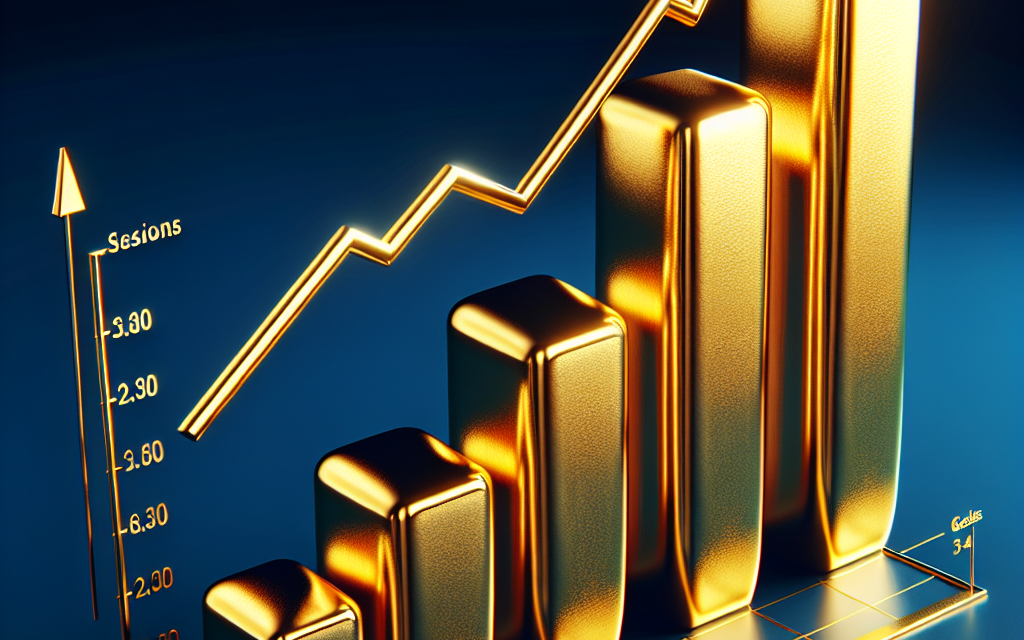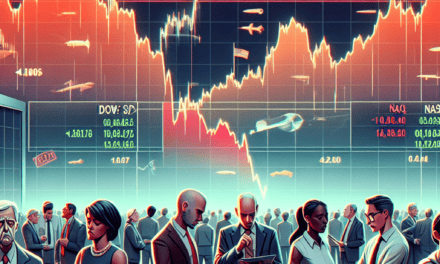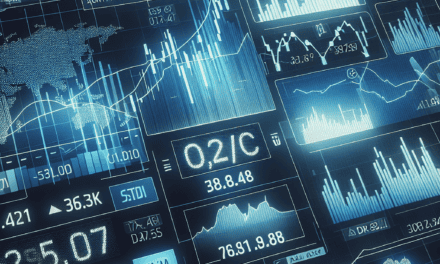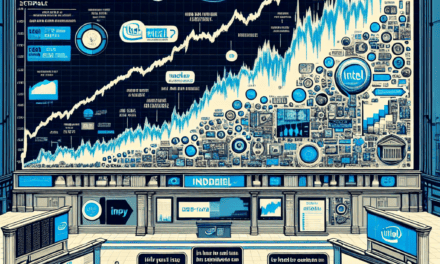“Gold Soars Higher: A Triple Triumph!”
Introduction
Gold prices have surged for the third consecutive session, driven by a combination of factors including heightened geopolitical tensions, fluctuations in the U.S. dollar, and ongoing concerns about inflation. Investors are increasingly turning to gold as a safe-haven asset amid economic uncertainty, leading to a notable increase in demand. This upward trend reflects market sentiment and the precious metal’s enduring appeal as a hedge against volatility.
Gold Prices Surge: Analyzing the Third Consecutive Session Climb
Gold prices have experienced a notable surge, marking a significant climb for the third consecutive session. This upward trend in the precious metal’s value can be attributed to a confluence of factors that have influenced investor sentiment and market dynamics. As global economic uncertainties persist, many investors are turning to gold as a safe haven, driving demand and consequently pushing prices higher.
One of the primary catalysts for this recent increase in gold prices is the ongoing volatility in financial markets. With geopolitical tensions and economic instability in various regions, investors are seeking refuge in assets that traditionally retain value during turbulent times. Gold, often viewed as a hedge against inflation and currency fluctuations, has become increasingly attractive. As a result, the demand for gold has surged, leading to a corresponding rise in its market price.
Moreover, the recent fluctuations in the U.S. dollar have played a significant role in gold’s ascent. A weaker dollar typically enhances the appeal of gold for investors holding other currencies, as it becomes less expensive to purchase. This inverse relationship between the dollar and gold prices has been evident in recent trading sessions, where a decline in the dollar’s value has coincided with an uptick in gold prices. Consequently, as the dollar continues to show signs of weakness, gold’s allure as a stable investment option is further reinforced.
In addition to currency dynamics, the actions of central banks around the world have also contributed to the rising gold prices. Many central banks have adopted accommodative monetary policies, including low interest rates and quantitative easing measures, to stimulate economic growth. These policies can lead to concerns about inflation, prompting investors to seek out gold as a safeguard against potential devaluation of fiat currencies. As central banks maintain their supportive stances, the demand for gold is likely to remain robust, further propelling its price upward.
Furthermore, the ongoing global economic recovery, albeit uneven, has also influenced gold’s trajectory. While some sectors are rebounding, others continue to face challenges, creating a complex economic landscape. In such an environment, gold serves as a stabilizing asset, appealing to those who wish to mitigate risk in their investment portfolios. This dual role of gold—as both a safe haven and a hedge against inflation—has solidified its position in the market, leading to increased buying activity.
As we analyze the implications of this third consecutive session climb in gold prices, it is essential to consider the broader economic context. The interplay of geopolitical tensions, currency fluctuations, and central bank policies creates a multifaceted environment that influences investor behavior. Consequently, as long as these factors remain in play, gold is likely to continue its upward trajectory, attracting both seasoned investors and newcomers alike.
In conclusion, the recent surge in gold prices reflects a complex interplay of market dynamics driven by economic uncertainties and investor sentiment. As gold climbs for the third consecutive session, it underscores the metal’s enduring appeal as a safe haven asset. With ongoing global challenges and shifting economic landscapes, the demand for gold is expected to persist, making it a focal point for investors navigating these turbulent times.
Factors Driving Gold’s Recent Rally
Gold has experienced a notable ascent in recent trading sessions, marking its third consecutive day of gains. This upward trajectory can be attributed to a confluence of factors that have collectively bolstered investor sentiment towards the precious metal. As market dynamics evolve, understanding the underlying reasons for gold’s rally becomes essential for both investors and analysts alike.
One of the primary drivers of gold’s recent surge is the prevailing uncertainty in global financial markets. Heightened geopolitical tensions, particularly in regions such as Eastern Europe and the Middle East, have prompted investors to seek safe-haven assets. Gold, historically regarded as a refuge during times of turmoil, has seen increased demand as individuals and institutions alike look to protect their wealth from potential market volatility. This flight to safety is further amplified by concerns over inflation, which has been a persistent issue in many economies. As central banks grapple with rising prices, the allure of gold as a hedge against inflation becomes increasingly pronounced.
In addition to geopolitical and economic uncertainties, fluctuations in currency values have also played a significant role in gold’s recent rally. The U.S. dollar, often inversely correlated with gold prices, has experienced periods of weakness. When the dollar declines, gold becomes more affordable for investors holding other currencies, thereby stimulating demand. This dynamic has been particularly evident as the Federal Reserve navigates its monetary policy, with market participants closely monitoring interest rate decisions and their implications for the dollar’s strength. As expectations shift regarding future rate hikes, the resulting volatility in the currency markets has contributed to gold’s upward momentum.
Moreover, the ongoing impact of the COVID-19 pandemic continues to shape investor behavior. Despite the progress made in vaccination efforts and economic recovery, uncertainties surrounding new variants and potential lockdowns persist. This environment of unpredictability has led many to reassess their investment strategies, with gold emerging as a favored option. The metal’s intrinsic value and historical stability make it an attractive choice for those looking to mitigate risk in an unpredictable landscape.
Furthermore, the role of institutional investors cannot be overlooked in this context. As large financial entities increasingly allocate portions of their portfolios to gold, the resulting demand has a pronounced effect on prices. Exchange-traded funds (ETFs) that track gold have seen significant inflows, reflecting a broader trend of institutional interest in the asset. This shift not only reinforces gold’s status as a viable investment but also contributes to its price appreciation, creating a positive feedback loop that further entices additional investors.
Lastly, technical factors within the commodities market have also influenced gold’s recent performance. As prices break through key resistance levels, momentum traders often enter the market, driving prices even higher. This technical buying can create a self-reinforcing cycle, where rising prices attract more buyers, leading to further gains. Consequently, the interplay between fundamental factors and technical trading strategies has created a conducive environment for gold’s rally.
In conclusion, gold’s ascent over the past few sessions can be attributed to a multifaceted array of factors, including geopolitical tensions, currency fluctuations, ongoing pandemic-related uncertainties, institutional interest, and technical market dynamics. As these elements continue to evolve, they will undoubtedly shape the trajectory of gold prices in the near future, making it imperative for investors to remain vigilant and informed.
Investor Sentiment: Why Gold is Gaining Popularity
In recent weeks, gold has experienced a notable ascent, climbing for the third consecutive session, a trend that has captured the attention of investors and analysts alike. This surge in gold prices can be attributed to a confluence of factors that reflect shifting investor sentiment in the current economic landscape. As uncertainties loom over global markets, many investors are increasingly turning to gold as a safe haven, seeking stability amid volatility.
One of the primary drivers of this growing interest in gold is the prevailing economic uncertainty. With inflation rates fluctuating and central banks grappling with the implications of monetary policy adjustments, investors are becoming more cautious. In such an environment, gold is often viewed as a reliable store of value. Historically, during periods of economic instability, gold has maintained its allure, serving as a hedge against inflation and currency devaluation. As inflationary pressures persist, the appeal of gold as a protective asset has intensified, prompting many to reassess their portfolios.
Moreover, geopolitical tensions have further fueled the demand for gold. As conflicts arise and diplomatic relations become strained, investors tend to seek refuge in assets that are less susceptible to geopolitical risks. Gold, with its intrinsic value and universal acceptance, stands out as a preferred choice. The recent escalation of tensions in various regions has heightened concerns about potential market disruptions, leading to a surge in gold purchases as investors aim to safeguard their wealth.
In addition to these external factors, the behavior of institutional investors has also played a significant role in the rising popularity of gold. Many large investment firms and hedge funds have begun to increase their allocations to gold, recognizing its potential to provide diversification and reduce overall portfolio risk. This institutional interest not only bolsters the demand for gold but also reinforces its status as a critical asset class in modern investment strategies. As more institutional players enter the gold market, retail investors often follow suit, further driving up prices.
Furthermore, the current interest rate environment has contributed to the attractiveness of gold. With central banks around the world maintaining low interest rates to stimulate economic growth, the opportunity cost of holding non-yielding assets like gold diminishes. In this context, gold becomes increasingly appealing, as it does not generate interest but can appreciate in value over time. As investors weigh their options, the prospect of capital appreciation in gold becomes more enticing, leading to increased buying activity.
As we look ahead, it is essential to consider the potential implications of these trends on the gold market. Should economic uncertainties persist or escalate, it is likely that the demand for gold will continue to rise. Additionally, if inflation remains a concern and geopolitical tensions do not abate, gold may solidify its position as a cornerstone of investment portfolios. In conclusion, the recent climb in gold prices reflects a broader shift in investor sentiment, driven by economic uncertainty, geopolitical risks, institutional interest, and favorable interest rate conditions. As investors navigate this complex landscape, gold’s enduring appeal as a safe haven asset is likely to remain strong, shaping the dynamics of the market in the foreseeable future.
Technical Analysis: Understanding Gold’s Upward Trend
Gold has demonstrated a remarkable upward trend, climbing for the third consecutive session, a movement that has captured the attention of investors and analysts alike. This sustained increase in gold prices can be attributed to a confluence of factors, including economic uncertainty, inflationary pressures, and shifts in monetary policy. As we delve into the technical analysis of gold’s recent performance, it becomes evident that several key indicators are signaling a bullish outlook for the precious metal.
To begin with, the price of gold has consistently breached significant resistance levels, which is a strong indicator of upward momentum. The recent sessions have seen gold prices surpass previous highs, suggesting that market sentiment is increasingly favoring the asset. This breakout is particularly noteworthy as it indicates a shift in investor behavior, with many turning to gold as a safe haven amidst global economic volatility. The psychological barrier of $1,800 per ounce has been a focal point, and its recent breach has further solidified the bullish sentiment surrounding gold.
Moreover, the moving averages provide additional insight into gold’s technical landscape. The 50-day moving average has crossed above the 200-day moving average, a phenomenon often referred to as a “golden cross.” This technical pattern is widely regarded as a bullish signal, suggesting that the upward trend may continue in the near term. Investors often look to such indicators to gauge market momentum, and the golden cross reinforces the notion that gold is poised for further gains.
In addition to moving averages, the Relative Strength Index (RSI) is another critical tool in technical analysis. Currently, the RSI for gold is hovering around the 70 mark, which indicates that the asset is approaching overbought territory. While this could suggest a potential pullback, it is essential to consider the broader context. An RSI above 70 does not necessarily imply an immediate reversal; rather, it can indicate strong buying pressure that may persist for some time. Therefore, while caution is warranted, the prevailing trend remains upward.
Furthermore, the interplay between gold and the U.S. dollar cannot be overlooked. As the dollar weakens, gold typically benefits, as it becomes more affordable for investors holding other currencies. Recent economic data has shown signs of a slowing U.S. economy, prompting speculation about potential interest rate cuts by the Federal Reserve. Such a scenario would likely lead to a further depreciation of the dollar, thereby enhancing gold’s appeal as an alternative investment. This inverse relationship underscores the importance of monitoring currency fluctuations when analyzing gold’s price movements.
As we consider the broader economic landscape, it is also crucial to acknowledge the impact of geopolitical tensions and inflationary concerns. Investors often flock to gold during times of uncertainty, viewing it as a hedge against inflation and a store of value. The current environment, characterized by rising consumer prices and ongoing geopolitical strife, has only intensified this trend. Consequently, the demand for gold is expected to remain robust, further supporting its upward trajectory.
In conclusion, the technical analysis of gold’s recent performance reveals a compelling narrative of strength and resilience. With key indicators such as resistance levels, moving averages, and the RSI all pointing towards a bullish outlook, investors are likely to remain optimistic about gold’s potential for continued gains. As economic uncertainties persist and inflationary pressures mount, gold’s status as a safe haven asset is likely to be reinforced, making it a focal point for investors navigating the complexities of the current market landscape.
Global Economic Impact on Gold Prices
In recent weeks, gold has experienced a notable ascent, climbing for the third consecutive session, a trend that reflects broader global economic dynamics. This increase in gold prices can be attributed to a confluence of factors, including inflationary pressures, geopolitical tensions, and shifts in monetary policy. As investors seek safe-haven assets amid uncertainty, gold has emerged as a preferred choice, reinforcing its status as a reliable store of value.
To begin with, inflation remains a significant concern for economies worldwide. Central banks, particularly in developed nations, have been grappling with rising prices that threaten to erode purchasing power. In response, many have adopted more accommodative monetary policies, which often lead to lower interest rates. When interest rates are low, the opportunity cost of holding non-yielding assets like gold diminishes, making it more attractive to investors. Consequently, as inflationary fears persist, gold tends to gain traction, as it is traditionally viewed as a hedge against inflation.
Moreover, geopolitical tensions have further fueled the demand for gold. Events such as conflicts, trade disputes, and political instability can create an atmosphere of uncertainty, prompting investors to seek refuge in gold. For instance, recent developments in various regions have heightened concerns about economic stability, leading to increased buying activity in the gold market. This behavior is not merely a reaction to immediate events; rather, it reflects a long-standing trend where gold serves as a buffer against the volatility of global markets.
In addition to these factors, the performance of the U.S. dollar plays a crucial role in influencing gold prices. Typically, gold and the dollar have an inverse relationship; when the dollar weakens, gold becomes cheaper for holders of other currencies, thereby boosting demand. Recent fluctuations in the dollar’s value, driven by economic data releases and Federal Reserve policy signals, have contributed to the upward momentum in gold prices. As the dollar faces pressure from various economic indicators, investors are increasingly turning to gold as a means of preserving wealth.
Furthermore, the ongoing recovery from the pandemic has introduced complexities into the global economic landscape. While some regions are experiencing robust growth, others are still grappling with the repercussions of lockdowns and supply chain disruptions. This uneven recovery has led to heightened market volatility, prompting investors to reassess their portfolios. In such an environment, gold often emerges as a stabilizing asset, providing a sense of security amid uncertainty.
As we look ahead, the interplay of these factors will likely continue to shape the trajectory of gold prices. Analysts are closely monitoring central bank policies, inflation trends, and geopolitical developments, all of which will influence investor sentiment. Should inflation persist or geopolitical tensions escalate, gold may see sustained demand, further solidifying its role as a safe haven.
In conclusion, the recent climb in gold prices is a reflection of the intricate relationship between global economic conditions and investor behavior. As inflation concerns mount, geopolitical uncertainties loom, and monetary policies evolve, gold remains a critical asset for those seeking stability in an unpredictable world. The ongoing dynamics of the global economy will undoubtedly continue to impact gold prices, making it essential for investors to stay informed and agile in their strategies.
Comparing Gold’s Performance with Other Commodities
In recent trading sessions, gold has demonstrated a notable upward trajectory, marking its third consecutive day of gains. This performance invites a comparative analysis with other commodities, shedding light on the factors influencing these market movements. As investors seek safe-haven assets amid economic uncertainty, gold’s resilience stands in stark contrast to the volatility observed in other commodities, such as oil and agricultural products.
To begin with, gold’s appeal as a hedge against inflation and currency fluctuations has been a significant driver of its recent price increases. In times of economic instability, investors often flock to gold, viewing it as a stable store of value. This trend is particularly evident when juxtaposed with oil prices, which have experienced considerable fluctuations due to geopolitical tensions and supply chain disruptions. For instance, while gold has steadily climbed, oil prices have faced downward pressure, reflecting concerns over demand amid potential economic slowdowns. This divergence highlights gold’s unique position as a safe haven, especially when compared to the more speculative nature of oil trading.
Moreover, agricultural commodities have also exhibited varied performance in the current market landscape. Factors such as weather conditions, trade policies, and changing consumer preferences have led to significant price volatility in crops like corn and soybeans. In contrast, gold’s recent gains suggest a more stable investment environment, as it is less susceptible to the immediate impacts of seasonal changes or trade disputes. This stability is further underscored by the fact that gold often retains its value even when other commodities face downward pressure, making it an attractive option for risk-averse investors.
Transitioning to the broader economic context, the recent uptick in gold prices can also be attributed to shifts in monetary policy and interest rates. Central banks around the world have adopted accommodative stances, which typically bolster gold prices as lower interest rates diminish the opportunity cost of holding non-yielding assets like gold. In this environment, the performance of gold stands in stark contrast to that of industrial metals, such as copper and aluminum, which are more closely tied to economic growth and industrial demand. As global economic indicators fluctuate, the demand for these metals can be unpredictable, further emphasizing gold’s role as a reliable investment during uncertain times.
Additionally, the interplay between gold and the U.S. dollar cannot be overlooked. A weaker dollar often correlates with higher gold prices, as the metal becomes more affordable for investors using other currencies. This inverse relationship has been particularly pronounced in recent weeks, as concerns over inflation and potential economic slowdowns have led to a depreciation of the dollar. Consequently, gold’s ascent has been bolstered by this dynamic, further distinguishing its performance from that of other commodities that may not benefit from similar currency fluctuations.
In conclusion, gold’s recent climb for the third consecutive session reflects its unique position in the commodities market, characterized by stability and resilience amid broader economic uncertainties. When compared to the volatility of oil and agricultural products, as well as the fluctuations in industrial metals, gold emerges as a preferred choice for investors seeking security. As market conditions continue to evolve, the comparative performance of gold against other commodities will remain a focal point for investors navigating the complexities of the global economy.
Future Predictions: Will Gold Continue to Climb?
As gold prices continue to rise for the third consecutive session, many investors and analysts are left pondering the future trajectory of this precious metal. The recent upward trend can be attributed to a confluence of factors, including geopolitical tensions, inflationary pressures, and shifts in monetary policy. These elements not only influence the immediate market dynamics but also set the stage for potential long-term trends in gold prices.
One of the primary drivers of gold’s ascent is the ongoing uncertainty in global markets. Geopolitical tensions, particularly in regions such as Eastern Europe and the Middle East, have historically led investors to seek refuge in gold as a safe-haven asset. This behavior is often exacerbated during times of crisis, as individuals and institutions alike look to protect their wealth from potential market volatility. As such, if geopolitical tensions persist or escalate, it is reasonable to predict that demand for gold may continue to rise, further propelling its price upward.
In addition to geopolitical factors, inflation remains a significant concern for many economies worldwide. Central banks have implemented various monetary policies to stimulate growth, which, while necessary, can lead to increased inflationary pressures. As the cost of living rises, the purchasing power of fiat currencies diminishes, prompting investors to turn to gold as a hedge against inflation. This trend has been particularly evident in recent months, as inflation rates have surged in several major economies. Should inflation continue to outpace wage growth and economic stability, it is likely that gold will remain an attractive investment option, thereby sustaining its upward momentum.
Moreover, the actions of central banks play a crucial role in shaping the future of gold prices. As central banks around the world navigate the delicate balance between stimulating economic growth and controlling inflation, their policies can have profound implications for gold. For instance, if central banks signal a shift towards tightening monetary policy, it could lead to a stronger dollar, which typically exerts downward pressure on gold prices. Conversely, if central banks maintain accommodative policies in response to economic challenges, gold may continue to benefit from increased demand as a safe-haven asset.
Furthermore, the evolving landscape of investment strategies also influences gold’s future. With the rise of digital currencies and alternative investments, some may question gold’s relevance in a modern portfolio. However, historical data suggests that gold has consistently maintained its value over time, often serving as a reliable store of wealth during periods of economic uncertainty. As investors seek diversification and protection against market fluctuations, gold’s intrinsic value may continue to appeal to a broad range of market participants.
In conclusion, while the recent climb in gold prices is noteworthy, the future trajectory of this precious metal remains contingent upon a variety of factors. Geopolitical tensions, inflationary pressures, and central bank policies will undoubtedly shape the market landscape in the coming months. As investors navigate these complexities, gold’s role as a safe-haven asset and a hedge against inflation may solidify its position in investment portfolios. Ultimately, while predicting the exact path of gold prices is fraught with uncertainty, the underlying fundamentals suggest that the precious metal may continue to climb, driven by both traditional and evolving market dynamics.
Q&A
1. **Question:** What is the primary reason for gold climbing for the third consecutive session?
**Answer:** Increased demand for safe-haven assets amid economic uncertainty.
2. **Question:** How did geopolitical tensions influence gold prices?
**Answer:** Geopolitical tensions heightened investor anxiety, driving them towards gold as a protective asset.
3. **Question:** What role do interest rates play in gold’s price movement?
**Answer:** Lower interest rates reduce the opportunity cost of holding gold, making it more attractive to investors.
4. **Question:** How did inflation concerns impact gold’s performance?
**Answer:** Rising inflation fears led investors to seek gold as a hedge against currency devaluation.
5. **Question:** What technical indicators suggested a bullish trend for gold?
**Answer:** Key moving averages and resistance levels indicated upward momentum in gold prices.
6. **Question:** How did the U.S. dollar’s performance affect gold prices?
**Answer:** A weaker U.S. dollar typically boosts gold prices, as it makes gold cheaper for holders of other currencies.
7. **Question:** What are analysts predicting for gold in the near future?
**Answer:** Analysts predict continued volatility, with potential for further gains if economic conditions remain unstable.
Conclusion
Gold prices have risen for the third consecutive session, driven by factors such as increased demand for safe-haven assets amid economic uncertainty, fluctuations in the U.S. dollar, and ongoing geopolitical tensions. This upward trend reflects investor sentiment favoring gold as a hedge against inflation and market volatility. As a result, the sustained climb in gold prices indicates a robust market response to current global economic conditions.





